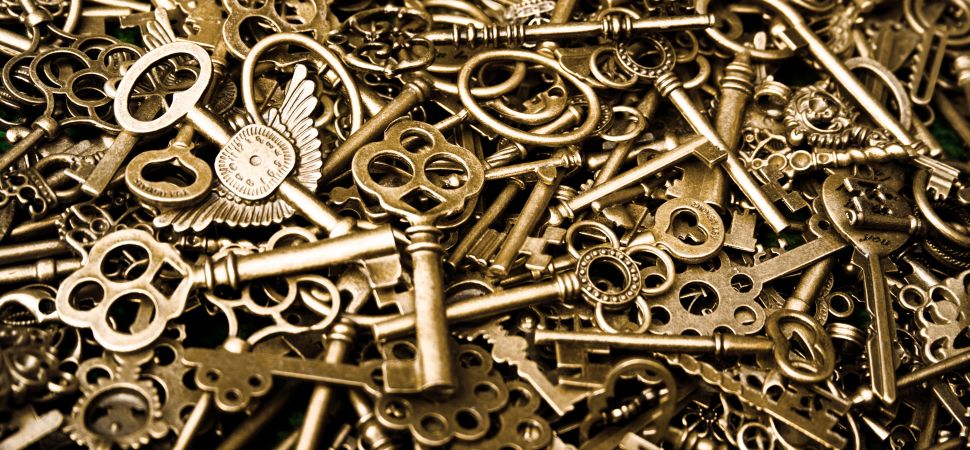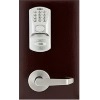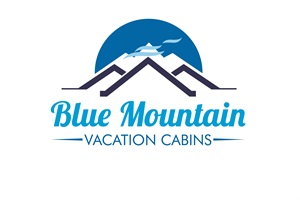We've released 3 lock integrations in the last month or so – eRentalLock, ResortLock, and RemoteLock.
After those releases, we started looking at the rest of the lock market to see what other smart lock systems we should consider adding to OwnerRez. There are so many different types and brands of locks there are nowadays with all sorts of features, pros, cons. Some can be connected to via API and are a possibility for OwnerRez integration, some are totally disconnected or only accessible through their own phone app, and some are in the middle between the two and can act disconnected or be integrated via a bridge/hub device.
Based on all of that research, I decided to write up this post to share everything we've learned so far.
WARNING: long post ahead -- 2700 words, 8 lock types, 21 locks, hubs, bridges etc. Tips and tricks are at the bottom, so if you've already got a smart lock, head down there to make the most of it :-)
I'm sure I haven't covered everything, so feel free to contact us and share your experiences or link me to a lock type I missed and I'll add it to the stack.
- Old school locks
- Numeric Sequence locks, Algorithmic locks, time set/controlled keypack locks
- Smart locks -- via WiFi, Zigbee/Z-Wave, bluetooth
- What type of lock should I choose?
- Tips & Tricks
- Conclusion
Old school locks
$20-$150
First off, there are offline or disconnected lock methods. There's a lot of variety even here, but they share a common theme of requiring manual programming with physical access to the lock required.
 The oldest method: leave the key with a neighbor/realtor/under the mat/over the door/in the flowerpot. I'm not even going to get into the pros and cons here.
The oldest method: leave the key with a neighbor/realtor/under the mat/over the door/in the flowerpot. I'm not even going to get into the pros and cons here.
Key with neighbor or realtor can work if you trust, but that's a lot of reliance on someone to physically be there.
Key under the mat... please don't do this. Even out in the boonies where you can leave your doors unlocked, you'll find that it can cause problems. I've personally had issues with folks in the neighborhood dropping by... or the old "we just used the hot tub because nobody was there" and then having a frustrated guest and extra cleaning. Locks are to keep honest people honest.
 Key lock box, with combination required to access the key. Basically a small key-sized safe, screwed down with heavy duty screws.
Key lock box, with combination required to access the key. Basically a small key-sized safe, screwed down with heavy duty screws.
PROS: Cheap and reliable. $20 bucks for the lock. Everybody knows how to use it. Very unlikely to break down. Easy to rekey the entire house to work on one key.
CONS: Physical access required to program the lock, meaning the code isn't changed often. Code is shared for multiple bookings -- even if you change it every month or two it's still some level of bookings using the same code. No long term access codes for housekeeping/maintenance. No access logs. Keys can be duplicated.
 Programmable electronic locks. These are enhanced deadbolts or latchbolts with a combination key pad. If the correct combination is entered, the door lock will open.
Programmable electronic locks. These are enhanced deadbolts or latchbolts with a combination key pad. If the correct combination is entered, the door lock will open.
PROS: Still pretty cheap and simple. $50-$150 for the lock. Multiple codes are available so you can use some for bookings and others for housekeeping/maintenance.
CONS: Physical access required to program the lock. Now we've got batteries to worry about. Most of these last for years, though, but it's still something to log and change. Still no access logs.
Numeric Sequence locks, Algorithmic locks, time set/controlled keypack locks
$300-$500
These terms all refer to the same basic concept. This is an upgrade to programmable locks where there is a known sequence of codes pre-programmed into the lock set for different dates and times. This allows you to generate a code remotely that is only valid for the check-in/check-out dates of a booking, all without being connected to the lock.
PROS: Codes can be generated remotely, no physical access or wireless connection required. Housekeeping and maintenance can have separate long term codes or even one time use codes. Access logs can be downloaded.
CONS: Batteries. Access logs are only accessible by physical download from the lock, no remote connection. Codes are pre-defined so they can't be extended if the guest wants to stay additional days -- instead you'd have to send a new code for those days.
There are several different companies offering this type of lock:
eRentalLock
- OwnerRez integrated
- $279-$429
- No monthly or other ongoing fees
- Entry code is 10 digits. After entering the 10 digit code, the guest can program a simple 4 digit code for their stay.
ResortLock
- OwnerRez integrated
- $299-$449
- No monthly or other ongoing fees
- Entry code is 10 digits. After entering the 10 digit code, the guest can program a simple 4 digit code for their stay.
Kaba Lodging/Oracode
- $549
- $15 monthly fee for access to online code generation
- No time-of-day codes
- 6 digit code
igloohome Smart Keybox
This is a hybrid algorithmic lock and keybox. You can generate access codes remotely via the numeric sequence generator, and then those codes give access to the keybox to retrieve the key.
- $169
- $4.99 monthly fee for access to online code generation
Smart locks -- via WiFi, Zigbee/Z-Wave, bluetooth
$175-$500
Finally, we get to smart locks. Rather than having a pre-programmed sequence of codes, you are able to add your own codes with check-in/check-out date/time, long term access codes, or one use access codes.
There are several different varieties based on what method is used for connectivity. Some can be connected directly via WiFi and are accessible over the internet. Others can be accessed locally either via open Zigbee/Z-Wave protocols or via a proprietary bluetooth connection to a mobile app. If you want to make the local locks internet accessible and programmable remotely, you can set up a separate bridge or hub device that connects to the lock and then connects via WiFi or wired connection to an internet service.
Zigbee and Z-Wave are two similar protocols to deliver a low powered wireless mesh network for connected home automation devices. Given a device like a lock, thermostat, window sensor, light, etc. and a hub with the same technology, the hub will be able to control the devices and optionally provide an internet bridge to allow control over the internet.
For vacation rental purposes, you'll probably want to set up the bridge device so you can program codes remotely, so factor the bridge into the cost. The proprietary bluetooth locks have dedicated bridges that can only handle those devices. The open Zigbee/Z-Wave hub/bridges support many different devices in addition to locks, like thermostats, sensors, etc.
Some smart locks are now designed with only the touchpad -- no keyway! Yale Key Free, Yale Assure, Kwikset Obsidian, etc. No key removes the risk of the lock being picked or opened with a bump key... but of course there's no backup if something goes wrong.
PROS: Codes can be added remotely at any time, with any numbers you like. Many owners use the last 4 of the guest's phone number to keep it simple and memorable. Housekeeping and maintenance can have their own codes. Access logs are accessible in real time, so you can see when guests or staff have arrived and departed.
CONS: Internet connection is required to program the device. If a code is already programmed in, guests can use it if the connection goes out, but it may not be the best bet in remote areas with spotty internet. Batteries.
WiFi connected and internet accessible smart locks
RemoteLock
RemoteLock is the only lock I know of that can directly connect to your WiFi with no bridge or hub needed. This greatly simplifies setup if you only have the one lock and no other devices to connect.
- OwnerRez integrated
- $299-$449
- $0.99 monthly fee for remote lock connection
- Code is programmable from 3-10 digits.
Gate
Gate is an internet-connected, video-enabled keypad smart lock. An "all-in-one" device, Gate connects to WiFi directly, so that owners can manage access remotely using the Gate app to perform actions such as create time-bracketed pin codes for guests or view and communicate with guests at the door. The camera and two-audio are built directly into the smart lock. Gate also has a physical key backup.
- $249-$349
- $4.99-$7.99 monthly fee for premier service plans. There is a free plan.
- Pin codes are 4 digits. Owners can grant temporary or recurring access via the Gate app.
- Rechargeable lithium-ion battery life: 1-3 months, depending on usage.
Open smart locks using Zigbee/Z-Wave
These locks use either Zigbee/Z-Wave wireless mesh networking protocols to connect with a hub that will manage them. You'll need both the lock and the hub at each property, so factor in the combined cost when making comparisons.
- Kwikset 910, 912, 914, 916, Obsidian - $125 - $205
- Schlage Connect - $150 - $200
- Yale Real Living - $125 - $200
Zigbee/Z-Wave internet bridge/hub devices
A combination of a Zigbee/Z-Wave smart lock from above with one of these internet bridge/hubs will make the lock programmable and accessible from anywhere over the internet. When figuring the total cost, add the price of the hub here with the lock from above.
- Vera/Mi Casa Verde - $79 - $130
- Wink - $49 - $99
- Samsung SmartThings - $79
If you use one of these hubs and want OwnerRez integration, let us know. We're still in the research phase for the internet bridge/hub to Zigbee/Z-Wave lock connection, so any feedback or info on your hub and its API will help us get to the end goal of integration.
Proprietary smart locks
These use their own apps and/or bluetooth rather than an open standard like Zigbee/Z-Wave. Some can be internet accessible with a separate bridge purchased from the same company versus the standard Z-Wave/Zigbee hubs that work with all open devices.
Independent locks:
Conversion kits that fit over an existing deadbolt:
- August Smart Lock - $229
- Kwikset Kevo Convert - $149
Add a bridge to make one of the above locks internet connected.
- August Connect - $79
- Kwikset Kevo Plus - $99
What type of lock should I choose?
If you're very cost conscious, a key lock box or programmable electronic lock is going to be far cheaper than the smart locks. The question is whether it is worth it to save a couple hundred dollars versus having shared lock codes and requiring direct access to reprogram the locks. A smart lock is a one time investment, assuming you choose one without a monthly fee, so that can repay the investment quite rapidly.
When deciding between algorithmic locks and internet accessible locks, the key question is that internet accessible locks… require a solid internet connection. The price is similar between internet locks and algorithmically determined ones. If you've got intermittent connections, don't go with the internet lock. I've got several cabins in a remote mountainous location. Even though there is internet most of the time, I've gone with algorithmic locks just in case. Either way, connection isn't required for guests to access the lock once it's programmed, but I've heard many stories of devices with intermittent connections needing to be reset and causing extra work. If the connection is solid, then the internet lock will give you a bit more control -- the chance to reprogram dates on a code, viewing access logs remotely, seeing whether a lock is currently locked, and remotely locking a lock if a guest forgets to lock on departure.
One thing to consider, especially while transitioning to a smart lock and setting all of the process, is to use a smart lock for the main lock box but also have a second key lock box with a backup key. That will cut down on any service calls to help the guest with the smart lock as you can give them the code for the backup key over the phone. But that code isn't shared with everyone, only with people who have issues gaining access through the smart lock.
Tips & Tricks
- Generate codes from your Property Management System (PMS). If you have a property management system that can connect with your lock, it can generate lock codes automatically for you. This is why we added integration for eRentalLock, ResortLock and RemoteLock to OwnerRez! The code will be stored on the booking and updated if the dates or property change. You'll set up a scheduled or triggered email to go out to the guest before arrival with the lock code mail merged into the email template. For OwnerRez, start with our guide to door lock integration support article, pick your lock type, and we'll walk you through the process step by step.
- Use the last 4 of the phone as a code. If you're not using a PMS, but are using a smart lock that is accessible remotely, the easiest thing is to use the last 4 of the mobile phone as the code. Program that in and share it with the guest to make sure that they know which mobile phone was used if there are multiple.
- Allow plenty of extra time on check-in/check-out. With a time based lock, it's tempting to set the allowed times as check-in and check-out. I'd recommend giving a bit of leeway on that. It's much better to have a guest a little early or late than to have to send somebody out there because the code expired or didn't work. Or you allowed early check-in or late check-out and forgot to update the code or the guest mixed up the codes. This is especially important on check-out -- if the guest leaves, forgets something and comes back and can't get in, that's a problem that could have been avoided. And again, locks are to keep honest folks honest, not to keep out somebody that really wants to get in or kick out someone that has overstayed their welcome. Personally, I allow midnight to midnight just in case.
- Hide a spare key. The smarter the lock, the more likely it is that something will fail or that the guest won't be able to figure it out. It's a good idea to have a key around just in case. Even if you don't tell the guest where to find the key, you could have a staff member retrieve it and help the guest out.
- Change the batteries ahead of time. Nothing worse than having a smart lock run out of juice when batteries are a buck or two to change. The best way to do this is on a schedule -- see how long the batteries last, change them with plenty of time to spare. You're probably already changing fire alarm batteries on a schedule -- at least I hope you are :-) -- so that's a good tag to add this task.
- Check if the lock is motorized or not. Some locks have a motorized bolt, some only move the pins but the guest has to throw the bolt themselves. Motorized bolts are usually simpler for the guest -- less confusion because you can hear the lock opening. But of course, bigger motor means more electricity used, meaning you've got to change the batteries more often.
- Do I need both the handle and deadbolt to be smart locks? Nope, you just need one lock per door to be smart. You can make the deadbolt the smart lock or make the latchbolt the smart lock. Both methods have their pros and cons.
If you do a latchbolt lock, then the deadbolt must be left unlocked between guests. The guest can access through the knob or handle lock, and throw the deadbolt once they're inside. Most have an option to automatically lock when the door is closed, so the guest doesn't forget to lock when they leave. Of course, this also means that if the guest exists and forgets the code, the door could be locked behind them.
If you do a deadbolt lock, it's more secure. But it doesn't have an option to auto lock on exit, so the guest could forget. If it is internet accessible, you can view the state and lock it remotely if the guest forgets (assuming they pulled the door fully shut). Make sure that the knob or handle doesn't lock automatically on exit, or the guest will lock themselves out. You might even want to get a knob without a lock or hide a knob lock nearby. I've seen instances where the guest accidentally locks the knob, then pulls the door shut and can no longer gain access without a staff trip out to unlock the knob.
Conclusion
Wow, thanks for reading all the way to the end! I learned a lot while researching for this article and I hope you learned a lot reading it.
If you know of any additional locks that could be added, or want to share what you do with your locks, more tips and tricks, etc. contact us.








































